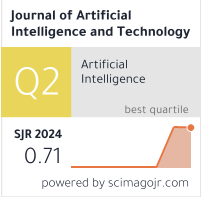Methods for Classifying Citrus Leaf Diseases through the Use of Ensemble Learning and Improvements in Transfer Learning
DOI:
https://doi.org/10.37965/jait.2025.0800Keywords:
Citrus leaf disease, deep learning, ensemble learning, precision agriculture, Deep learning, Arabic sign language, Transformer, Hybrid Transformer and transfer learningAbstract
The swift and accurate detection of citrus leaf diseases influences agricultural output, minimizes crop losses, and fosters long-term sustainability in farming practices. This study employs transfer learning and ensemble learning techniques to introduce an advanced deep learning architecture that significantly improves disease classification capabilities. The proposed method constructs a multi-model fusion network (MMFN) utilizing three robust convolutional neural networks, that is,AlexNet, VGG16 and ResNet50—thereby augmenting feature extraction capabilities and strengthening generalization across diverse disease patterns. The ensemble method mitigates typical disadvantages associated with single-model systems, such as overfitting, reduced robustness, and diminished accuracy with novel data by leveraging the complementary attributes of each network.
Proposed MMFN (AlexNet + VGG16 + ResNet50) more effectively leverages the complementary attributes of shallow (AlexNet), mid-depth (VGG16), and deeper residual architectures (ResNet50). This balanced integration enhances generalization across diverse disease patterns as compared to other ensemble models, particularly evident in its superior recall and F1-score, indicating improved detection of varied citrus leaf diseases while maintaining computational efficiency as MMFN extracts features from AlexNet, VGG16, and ResNet50 in parallel and fuses them before classification. The experimental dataset was compiled from both public collections and field sources. It is not a purely public dataset, but rather a hybrid dataset combining existing open datasets with additional field-collected images.
The dataset confirms the model’s effectiveness and reliability in actual agricultural settings by showing substantial improvements in recall and F1-score. The ensemble strategy not only reduces dependence on manual inspections but also enables the deployment of a scalable, automated citrus disease detection system suitable for integration into smart agriculture platforms, contributing toward sustainable and precision farming initiatives.
Downloads
Published
How to Cite
Issue
Section
License
Copyright (c) 2025 Authors

This work is licensed under a Creative Commons Attribution 4.0 International License.




